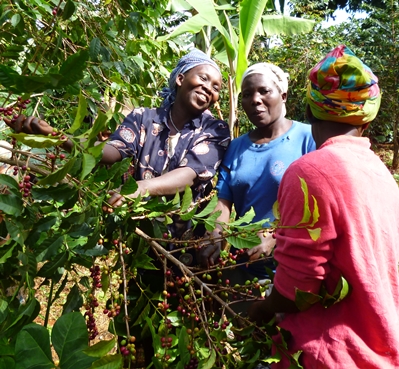During the 2016-2021 period, the Agriculture sector remained the main thrust of Uganda’s economy, with agriculture-based products accounting for about 45% of exports in FY 2018/19, underlining why agriculture remains one of the four key sectors highlighted in the Uganda vision 2040.
Modernization of Agriculture remains one of the key components of the National Resistance Movement (NRM) Manifesto and President Museveni has severally highlighted the need to use the sector as a base of improving our balance of payments constraints.
Improving Uganda’s Balance of Payment would provide the much-needed foreign exchange to the country.
To achieve that key goal, the development and growth of the sector is anchored on four strategic objectives, as outlined in the National Development Plan 2 (NDP2) and the Agriculture Sector Strategic Plan (ASSP) 2015/16 – 2019/20.
The four goals are to; increase production and productivity of agricultural commodities and enterprises; increase access to critical farm inputs; improve access to markets and value addition and strengthen the quality of agricultural commodities; and strengthen the agricultural services institutions and also create an enabling environment for the sector to grow.
In the past year the Agriculture sector contributed 22% of the Gross Domestic Product (GDP) and registered improved growth rates from 2.8% in FY 2015/16 to 5% in FY 2018/19.
On the employment front, the Agriculture sector was also very important as it employs about 64% of all Ugandans (and about 72% of all youths) highlighting its importance to household income growth and consumption, and thereby stimulating growth in the other sectors.
In the 2016 NRM Manifesto, President Museveni committed to support key strategic commodities to ensure greater impact on household incomes and national export earnings.
The emphasis of these interventions put emphasis on commodity value chains, focusing on: research; extension; pest, vector and disease control; provision of inputs; promoting sustainable land use and soil management; post-harvest handling; improving market access and infrastructure; and value addition.
In the past year, some of the other key achievements in the Agriculture sector included the increase of the value of agriculture exports from $1.326 billion to $1.5 billion representing a growth of 20% in the past four financial years.
The 2014 Population and Housing Census figures also indicated that close to 80% of the households in the country are involved in agriculture, a further improvement for the sector.owever, it was not all plain-sailing in the Agriculture sector as some challenges were registered.
Some of the main challenges that the Agriculture sector faced over the past year included prevalent pests, vectors and diseases, the outbreak of desert locusts in Karamoja, Teso, Lango, Acholi and Eastern Uganda.
The outbreak of desert locusts stretched the sector in terms of technical personnel and other resources.
There was also a challenge of weak linkage between provision of agricultural inputs and provision of agricultural extension services; as the extension service in Local Governments is still constrained by low staffing in some areas and mobility to reach out to all farmers.
Changing weather patterns also affected timely distribution of planting materials sometimes resulting into wastage of planting materials and low crop survival rates while excessive rainfall in some parts of the country affecting seasonal crops especially le







